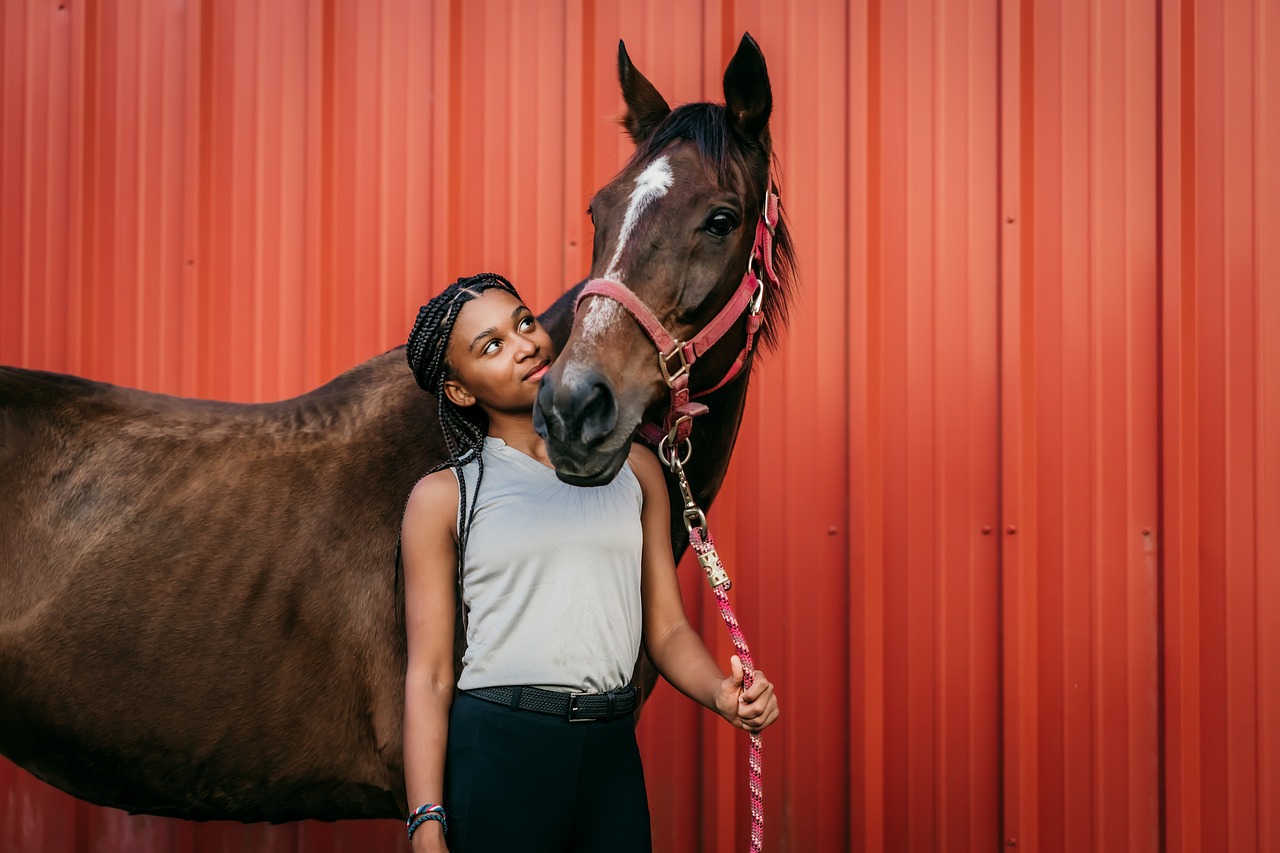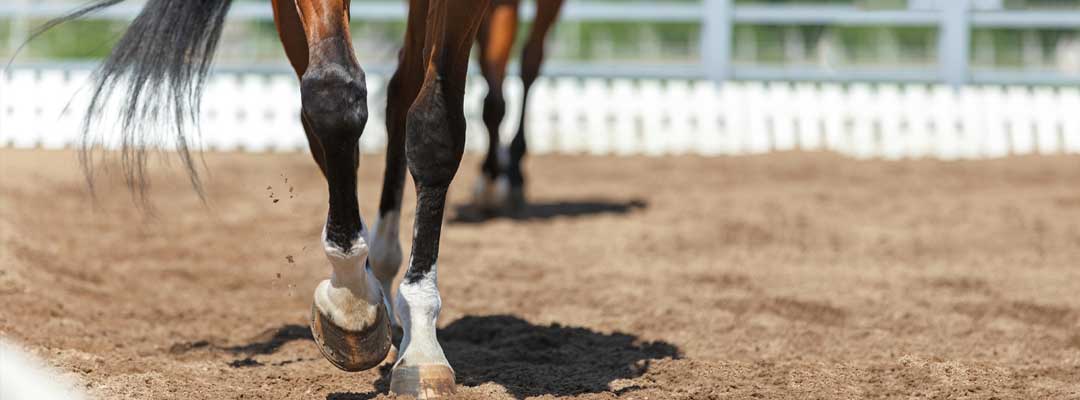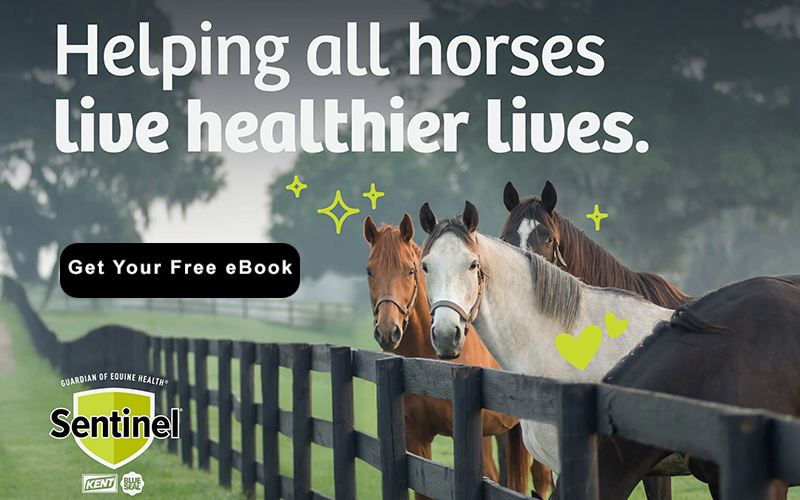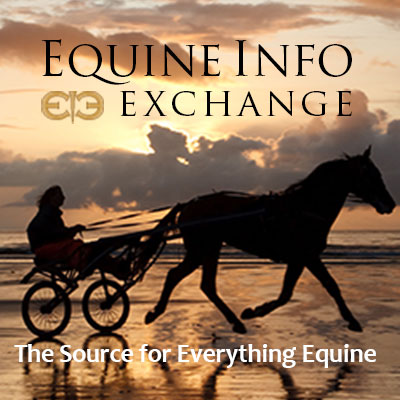Health & Education
We all want the best care possible for our horses. The Heath & Education section covers both Learning Institutions, Organizations as well as many sources for equine assistance including Veterinarians and Farriers.
For those who want a to formally study horses, the Education section includes College Riding, Equine Studies, and Veterinary Schools. Learn about the wide variety of horses in the Horse Breeds section. Supplements and Treatments Therapy are also included in the section.
Everyone can learn from Fine Art and there are some specialty Museums that might surprise you.
Horses as a therapy partner enrich the lives of the disabled. These facilities are listed in our Therapeutic Riding section. To help children and young adults build confidence and grow emotionally, please see the resources available on the Youth Outreach page.
Looking for a place to keep your horse? You can find it in the Horse Boarding section. Traveling? Find a Shipping company or Horse Sitting service if your horse is staying home!
Want to stay up to date with the latest training clinics or professional conferences? Take a look at our Calendar of Events for Health & Education for the dates and locations of upcoming events.
Do we need to add more? Please use the useful feedback link and let us know!
In this StallSide episode, Dr. Emma Adam and Krista Lea from the University of Kentucky join cohosts Dr. Bart Barber and Dr. Peter Morresey for a conversation on the complexities of tall fescue and the implications of endophyte ingestion. The conversation opens with Dr. Adam and Lea sharing their expertise on the characteristics of tall fescue grass and the symbiotic relationship it forms with the endophyte fungus. Throughout the episode, the cohosts and guests offer a balanced blend of scientific knowledge and practical advice, exploring the effects on equine health and addressing the significance of proper pasture management techniques.
Read more: Rood & Riddle Stallside Podcast - Tall Fescue Woes: Insights on Endophyte Ingestion
In this 69th episode of StallSide, we welcome international guest Dr. Jenny Hagen, from the University of Leipzig in Germany. Dr. Hagen shares her expertise in equine biomechanics and farriery and offers an in-depth look into her innovative approach to diagnosing and treating lameness. Learn about the complexities of equine movement, the latest advancements in biomechanics, practical farriery tips, and how a thorough understanding of these fields can revolutionize lameness treatment and improve your horse's performance and well-being. Tune in for an engaging conversation that bridges cutting-edge science and everyday equine care.
"Regenerative Medicine Therapies in Horses," presented by Dr. Aimee Colbath, assistant professor in the Section of Large Animal Surgery at #CornellVet, recorded December 19, 2023 via Zoom.
⚠️ Please note: This presentation includes photos of healing injuries and wounds. Please view at your own discretion.
Dr. Aimee Colbath's talk focuses on regenerative medicine treatments available to equine owners including stem cells, platelet rich plasma, autologous conditioned serum (IRAP) and autologous protein solution (ProStride).
Colbath received her VMD from the University of Pennsylvania. Following graduation, she completed a large animal internship at the University of Georgia followed by an equine surgical internship at the Tufts Cummings School of Veterinary Medicine. From 2012-2015, Colbath completed an equine surgical residency at Colorado State University. In 2022, she started a position in Large Animal Orthopedic Surgery at Cornell University.
Clinically, Colbath has a passion for musculoskeletal disease and orthopedic surgery including arthroscopy, fracture repair and lameness with a special interest in regenerative medicine and whole horse rehabilitation techniques (including acupuncture, kinesiotape and physiotherapy). Her laboratory focuses on musculoskeletal disease interventions with a special interest in immunotherapeutic treatments and regenerative medicine techniques.

Horse facilities can provide more than just dung and hoof prints. Equine-assisted programs offer unique educational benefits that could enhance students’ experiences and improve their lives. Are you wondering about the specifics? Take a look.
1. Building Confidence
Working with horses gives students more confidence and raises their self-esteem, as learning to groom and ride such proud, noble creatures promotes a sense of achievement.
2. Improving Communication Skills
Horses are observant beings who react to non-verbal communication elements by observing one’s body language. Dealing with them helps students understand the value of expressing one’s feelings. Besides, students must work together, communicating with the horse and each other to achieve mutual goals. Such activities help enhance their social skills and foster relationships with their peers.
3. Developing Empathy
By caring for horses, students learn sensitivity and gentleness. It fosters a unique environment where emotional and social skills can flourish.
4. Stress Reduction and Emotional Regulation
Spending time with horses helps reduce stress levels. It also facilitates emotional regulation, assisting students to manage anxiety and improve their mood.
5. Encouraging Physical Activity
Horse riding is a vital part of teaching and training horses. It involves such physical activities as grooming, saddling up, and riding, which promote an active lifestyle and urge students to remain fit.
6. Boosting Cognitive Abilities
Mental stimulation sharpens our skills. What do you do when you can’t solve an academic problem? You contact the best essay service, Top Essay Writing, and ask them for help. You gain new insights once you see their work, stimulating your knowledge and critical thinking. The situation with horses is rooted in the same principles. Cognitive abilities are developed when equestrian practitioners learn to identify and remove obstacles, such as figuring out how to jump a fence and providing commands to their horses. It involves thinking critically, locating solutions, and analyzing situations.
7. Supporting Special Needs Education
Of course, equine-assisted learning can help any student, but those with special needs can benefit from the controlled environment the horses provide. When horses are understood and treated with respect, they become focused and obedient. Spending time with them can help improve students with special requirements' focus, motor, and sensory skills.
8. Teaching Responsibility and Commitment
You can’t just forget about a horse. It is what students should do daily:
- Feed a Horse: Students must give it food every day.
- Give Fresh Water: Horses love drinking, so a fresh supply must be present all the time.
- Make Sure It’s Properly Cared for: Students must watch out for their horse’s health.
- Be Attuned to Its Needs: You’ll learn how to speak with your horse and monitor its needs and wants. Fulfill them, and you’ll have a friend for life.
A sense of responsibility connects the dots for many students, so they understand that they can’t just show up to use horses for practice and do nothing in return. The sense of consistency, responsibility, and reliability is what they will take into the other parts of their lives.
9. Fostering Environmental Awareness
By learning about horses and how to care for them, students are introduced to sustainability practices related to animal welfare and the conservation of the environment. They learn to value nature and discover how to preserve it.
10. Inspiring Career Exploration
Inspiration comes in the most unexpected shapes. Seeing the base of sample essays on different topics can help you understand your subject better, allowing you to discover something new about it. Similarly, by spending time with horses, students might decide to study veterinary sciences, animal behavior, or agriculture. Equine-assisted programs can help inform your future career.
11. Artistic Expression
Plenty of art activities, such as drawing and painting, can be centered on horses. Students can express themselves visually after spending a day with their creature.
Galloping Towards Growth
Equine-assisted learning programs are a valuable part of learning environments. Their possibilities can affect students’ confidence, communication skills, and empathy. When schools open their doors to horses, it signals that school leaders are ready to nurture the development of their students in ways that go beyond standard academic curricula.There are more informative articles in our section on Health & Education.
"Why is the Mule the Most Important Member of the Horse Family?" presented by Dr. Doug Antczak, recorded Feb. 21, 2023 via Zoom.
The Mule is a hybrid animal produced by a mating between two separate species, the horse and donkey. Mules have a long history of contributions to human society as a remarkable beast of burden and source of animal power. Less well known are the many ways in which the study of mules has advanced scientific thought and our understanding of fundamental biological principles. This seminar will introduce you to the wonderful and fascinating world of mules.
Doug Antczak, VMD, PhD, is the Dorothy Havemeyer McConville Professor of Equine Medicine at the Baker Institute for Animal Health. Antczak graduated from Cornell University with a BA in biology in 1969, before receiving his VMD from University of Pennsylvania in 1973. He then completed a PhD in immunology at the University of Cambridge in 1978. At Cornell, Doug Antczak’s research program is focused on the health of horses, a passion of his from an early age. Through the Baker Institute’s Equine Genetics Center, the Antczak laboratory group has a long history of advancing basic knowledge and applying that knowledge in equine genetics, immunology and reproduction. Among other important projects, Dr. Antczak’s genetic selection and breeding of horses led to his continuing involvement in the international Horse Genome Project.
Read more: Why is the Mule the Most Important Member of the Horse Family? Cornell Equine Seminar
"Five tips for keeping your horse sound," presented by Michelle Delco '98, D.V.M. '02, Ph.D. '16, assistant research professor at the Cornell College of Veterinary Medicine, as part of the Cornell Equine Seminar Series.
Cornell's Equine Hospital, the New York State 4-H Horse Program and Cornell Cooperative Extension are proud to host the Equine Seminar Series. In this series, equine experts present on important equine health and management topics. The seminars are free to attend and open to the public. We hope you will join us and other equine enthusiasts for this exciting virtual learning opportunity!
Read more: Five Tips for Keeping Your Horse Sound - Cornell Vet Equine Seminar Series
In this Certified Horsemanship Association (CHA) safety tip, Master Instructor Teresa Kackert will show you how to safely deworm your horse by use of a syringe. We thank Bimeda, who makes wonderful deworming products, for the help in making this video. We also thank Houghton College in New York for the wonderful facility and horses to work with in producing these videos.
Read more: Deworming the horse using a paste syringe with Teresa Kackert
Cornell Equine Seminar Series presents:
"Stable Vices: Theirs or Ours? Abnormal Behavior in Horses," presented by Dr. Katherine A. Houpt, recorded Sept. 19, 2023.
Houpt, who is the James Law Professor Emeritus of Behavior Medicine at #CornellVet, discusses common stereotypies in domestic horses, including potential causes, treatments and management strategies.
Houpt received her VMD and Ph.D. in Behavioral Psychology from the University of Pennsylvania. Her research is focused on domestic animal welfare, equid behavior and physiological basis of equine ingestive and maternal behavior.
Read more: Stable Vices: Theirs or Ours? Abnormal Behavior in Horses

Your horse is reluctant to pick up more than a walk lately -- is she feeling a bit sluggish, or could it be osteoarthritis?
Osteoarthritis (OA) -- also referred to as equine degenerative joint disease (DJD) -- is a common condition horses experience resulting in degeneration of the joints and pain, inflammation, reduced flexibility and range of motion. Osteoarthritis typically affects the synovial and cartilaginous components of joints. Any joint is at risk whether hips, hocks, stifles or knees and fetlocks.
Find answers to FAQs about lameness and arthritis in horses, below.
At what age do horses get arthritis?
Osteoarthritis can impact every horse, no matter their age, breed or discipline. It’s a common misconception that the condition impacts only senior horses, however. Horse owners will need to take preventive steps early on to control their horse’s risk, and manage with prompt diagnosis and proactive treatment, should their horse develop OA over time.
What is the most common cause of lameness in horses?
It is estimated that OA is responsible for up to 60% of all lameness in horses.
How can I tell if my horse is in pain?
“Horses almost never say ‘no.’ Horses can talk, and it is our job to learn how to speak their language and above all, to listen and be their advocate,” said Steve Allday, DVM, an equine lameness specialist with more than 35 years’ experience caring for an impressive list of equine athletes. Dr. Allday also founded and developed the joint supplement line, LubriSyn.
To help address the underrecognized signs of pain in horses, co-authoring Drs. Catherine Torcivia and Sue McDonnell, within the University of Pennsylvania School of Veterinary Medicine, published “Equine Discomfort Ethogram.” The report outlines 73 equine discomfort behaviors and grouped them into eight categories: posture and weight-bearing; limb and body movements; head, neck, mouth, and lip movements; attention to area; ear and tail movements; overall demeanor; altered eating or drinking; and vocalizations/audible sounds. Review their published work for detailed illustrations, written descriptions and even videos to best know whether your horse is in pain.
How can you tell if your horse is lame?
Dr. Allday recommends that you lunge or hand-trot your horse and look for a “nod.” If their head goes down when the right front leg goes forward, the problem is in the left front. If they “toe-heel” on their hind legs, it’s a sure-sign there is pain in the heel, frog or other form of lower-limb lameness.
What causes arthritis in horses?
Trauma to the joint, a horse’s conformation defects, their age, improper shoeing and trimming, as well as sequential bone fragments can all cause equine arthritis.
What are the signs of arthritis in horses?
There are a number of signs your horse could be affected by OA, such as lameness or limping, warm or painful, swollen joints, reluctance or difficulty to move, and stiffness in the joints.
Can arthritis in horses become worse over time?
“Osteoarthritis is ubiquitous in all mammals and progressive as a rule,” said Dr. Allday. With proactive treatment, and joint health supplements to prevent the condition from worsening, arthritis in horses can be manageable.
How do you prevent arthritis in horses?
By getting ahead of what problems could arise because of a horse’s conformation or housing/training environments, you can help prevent joint issues.
Incorporate horse joint supplements like LubriSyn HA or Cosequin to support healthy joints and improved mobility.
Prioritize hoof care and keep horses on a regular trim schedule. Learn more about horse hoof care from a lifelong horse farrier.
Keep horses at their optimum weight, as obesity stresses the joints.
Ensure they receive excellent nutrition to encourage strong bones and healthy cartilage.
Limit riding on hard surfaces, if possible, and instead opt for softer footing.
“I put my horses on Lubrisyn as soon as possible,” Dr. Allday said. “I have unwavering statistics, the earlier they go on it, the more they function, and the less necessary it is for me to inject them. I have a rope horse I made over $150,000 on, and I’ve only injected him one time. He has showed up for me every time.”
How do I know if my horse has arthritis?
Owners and riders are excellent diagnosticians of any changes in a horse’s joint health. “This is simply because you know your horse. When I go look at a horse, I’m taking a snapshot of just that moment, while you have known the horse for days and years -- sometimes, his entire life -- before I got there that day,” said Dr. Allday, who recommends giving horses a close once-over when grooming or tacking up for a ride. Look to see if one side is larger than the other. Also, rub the horse’s back and palpate it to make sure it isn’t sore, and always check their hocks for any fluid. Share any new findings with your veterinarian. Should your veterinarian suspect joint problems, it’s likely they will perform a routine lameness evaluation.
Can you ride a horse with arthritis?
The short answer is “Yes,” but it depends. Talk with your veterinarian about your horse’s level of arthritis to know whether with treatment, he recommends the horse being ridden. “OA isn’t the end of their career, but it’s certainly something you have to be on top of, address rapidly and maintain routinely,” said Dr. Allday. “You may even have to go to anti-inflammatories to maintain a horse’s athletic career.”
What is the best treatment for arthritis in horses?
Veterinarians may recommend prescription medications, like Equioxx, Surpass Topical or Adequan i.m. to manage the pain and inflammation associated with osteoarthritis. Should OA be diagnosed, your veterinarian will work closely with you on joint health needs to prevent further progression of joint damage, as well as anti-inflammatory treatments available to manage the pain and inflammation associated with osteoarthritis.
Visit Valley Vet to learn more.
- How to Safely Pony a Horse with Teresa Kackart (6:55) - Certified Horsemanship Association
- Equine Emergencies 101: What To Do When the Worst Happens from Cornell Equine Seminar
- Pre-purchase Headaches in the Sport Horse
- Sources of Magnesium - Including Whole Foods
- The Grayson-Jockey Club Research Foundation: Improving the Ability to Diagnose Spinal Cord Diseases
- Leadership Isn’t as Simple as it Sounds - an Excerpt from "How Two Minds Meet"
- CBD and other Cannabinoids – How they can benefit you, your horses, and your pets
- Foal Handling with Monty Roberts (2:00)
- Rood & Riddle Stallside Podcast: Sport Horse Medicine & Innovative Therapies with Dr Daniel Devis
- Melatonin: Can It Predict Your Horse’s Temperament?
- Summer Safety: Barn Fans & Automatic Horse Waterers
- Upper Airway Obstruction in Barrel Racing Horses
- Start Horseback Riding off on the Right Hoof
- Highlining with Fred Bruce and Stan Loewen
- Double Lunging the Horse with Mitzi Summers (10:53)
- Music Helps Horses Better Respond to Performance Demands
- What to Expect When Sedating a Horse
- Benefits of Beet Pulp for Horses
- Monty Roberts - Cinder Part 2 The Value of Force Free Training (2:19)
- Monty Roberts - Cinder Part 1: Join Up with a Wild Horse (2:04)

































